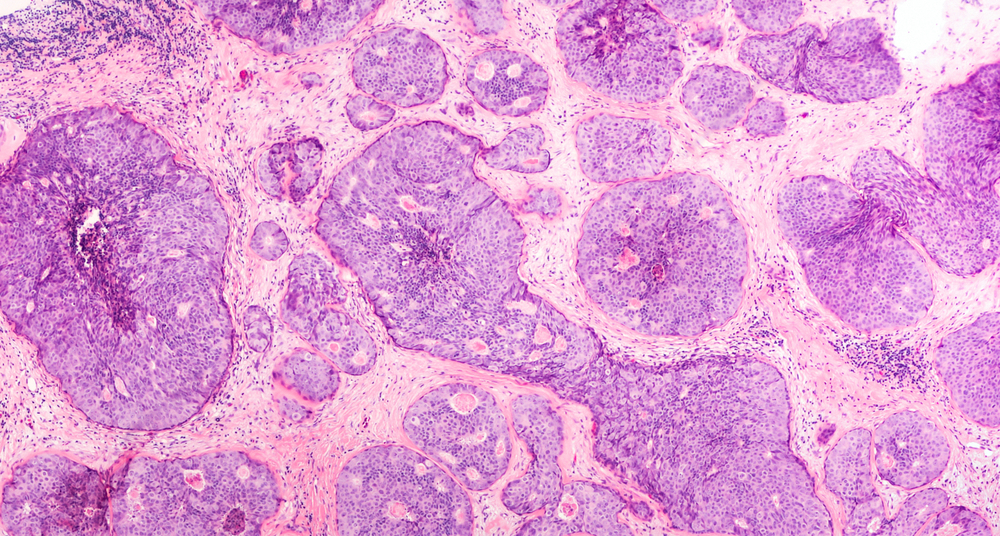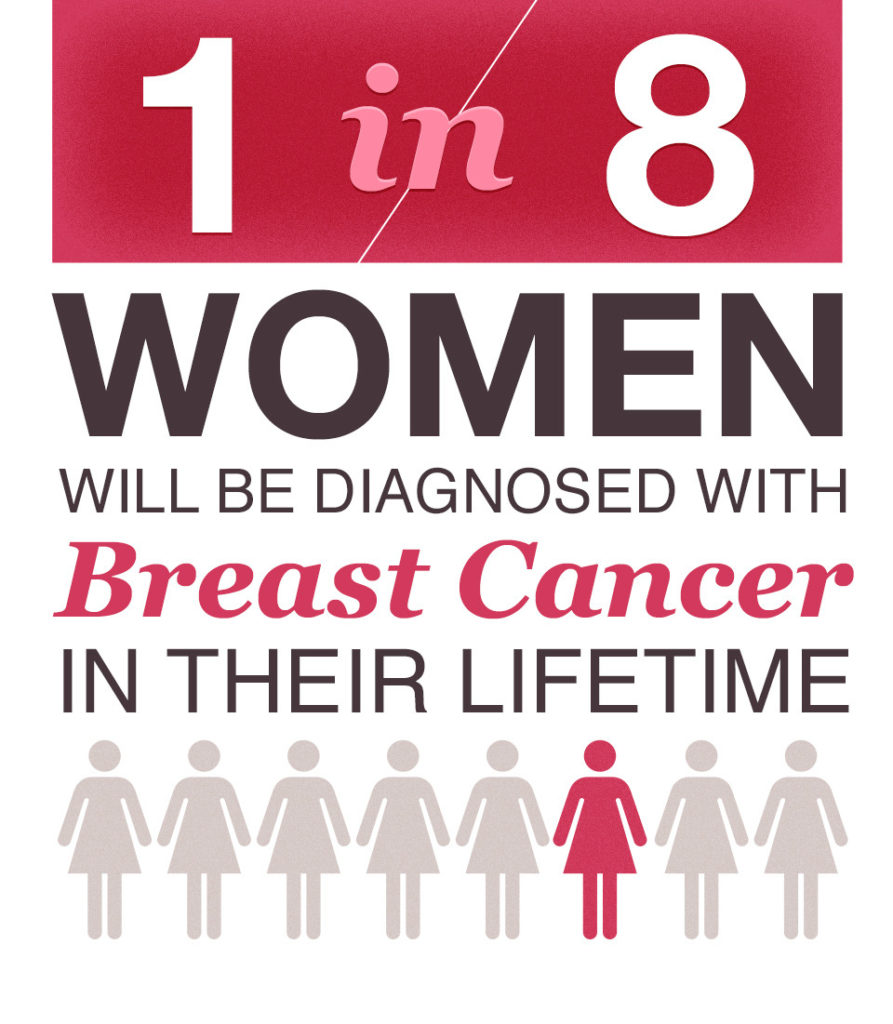Breast Cancer begins in the cells which are the basic building blocks that make up tissue. Tissue is found in the breast and other parts of the body. Sometimes, the process of cell growth goes wrong and new cells form when the body doesn’t need them and old or damaged cells do not die as they should. When this occurs, a build up of cells often forms a mass of tissue called a lump, growth, or tumor.
Breast cancer occurs when malignant tumors develop in the breast. These cells can spread by breaking away from the original tumor and entering blood vessels or lymph vessels, which branch into tissues throughout the body. When cancer cells travel to other parts of the body and begin damaging other tissues and organs, the process is called metastasis.


Facts About Breast Cancer In The United States
One in eight women in the United States will be diagnosed with breast cancer in her lifetime.
Breast cancer is the most commonly diagnosed cancer in women.
Breast cancer is the second leading cause of cancer death among women.
Each year it is estimated that over 252,710 women in the United States will be diagnosed with breast cancer and more than 40,500 will die.
Although breast cancer in men is rare, an estimated 2,470 men will be diagnosed with breast cancer and approximately 460 will die each year.
On average, every 2 minutes a woman is diagnosed with breast cancer and 1 woman will die of breast cancer every 13 minutes.
Over 3.3 million breast cancer survivors are alive in the United States today.
In recent years, perhaps coinciding with the decline in prescriptive hormone replacement therapy after menopause, we have seen a gradual reduction in female breast cancer incidence rates among women aged 50 and older. Death rates from breast cancer have been declining since about 1990, in part due to better screening and early detection, increased awareness, and continually improving treatment options.
Early detection of breast cancer can save your life so don’t make late to detect you have hereditary breast cancer gene or not. Click the button below to place your order online!
BRCA Gene Mutation
BRCA is a genetic test that detects the presence of a BRCA1 or BRCA2 gene mutation. BRCA mutations are responsible for the majority of hereditary breast and ovarian cancers. People with a mutation in either the BRCA1 or BRCA2 gene have risks of up to 87 percent for developing breast cancer and 39-63 percent for developing ovarian cancer by age 70. Mutation carriers previously diagnosed with cancer also have a significantly increased risk of developing a second primary cancer. In fact, patients with these types of mutations have an up to 64 percent chance of developing a second breast cancer by age 70.
BRCA Analysis requires only a simple blood test or oral rinse sample to determine if a person has a BRCA1 or BRCA2 mutation. Knowing the results may help patients and their healthcare professionals either prevent or delay the onset of cancer or detect it at an earlier, more treatable stage.
BRCA Vevazz has developed a Hereditary Cancer Quiz that patients and can use to help identify potential candidates for genetic testing using BRCA Analysis.
The Benefits of BRCA Gene Testing
The results of the BRCA Gene test enables the development of patient-specific medical management plans to significantly reduce the risk of cancer. BRCA test allows healthcare professionals to:
Target increased surveillance and other interventions specifically to those individuals with a BRCA1 or BRCA2 mutation –maximizing patient care and increasing clinical efficiency
Significantly improve outcomes and reduce medical costs through earlier diagnosis and treatment of cancer
Counsel patients and family members on the underlying causes of the pattern of breast and/or ovarian cancer in their family, and
Avoid unnecessary interventions for family members who do not test positive for the mutation known to be in the family.



